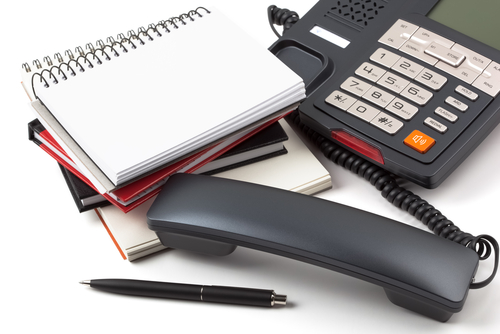What's More Valuable for Your Business? Cloud PBX vs Traditional PBX

For those people who haven’t noticed lately, there’s been a new tech wave that’s revolutionizing everything: The Mighty Cloud. While it’s often associated with Apple and storage, that’s simply marketing - cloud solutions have made major changes across nearly everything in technology, including telecom.
With running a telecoms business, one must make many decisions regarding the most efficient method. A Private Branch Exchange (PBX) makes an enormous impact when customers call into an organization, and can effectively unify communications among multiple locations. But - which one is the right one for your business?
What is a PBX?
When comparing a PBX purchase, the two types are a physical PBX and a cloud PBX. A physical, or traditional PBX is a routing system, where all incoming calls terminate at the PBX. From there, the PBX directs traffic, depending on the number dialed. It can have a “Press 1 for sales, 2 for customer service” type recording, any number of extensions, time of day forwarding, and can bridge conferences. The capabilities of a PBX will vary greatly depending on what type you choose.
Hardware
A physical PBX requires purchase of a PBX server, routers, and cables. While the capital expense can be quite hefty, there are also the labor costs of programming everything. If you already have an IT department who can handle this, it may not be as cost-intensive.

On a cloud based PBX, there are less capital concerns, as the infrastructure is already in place. Instead of having a physical server or servers on the premises, it’s in a data center somewhere, where someone else has built out the hardware.
Scalability
With traditional PBXs, the physical factor again comes in to play. Adding features or levels (like an IVR) often means purchasing more materials. As a business grows, it will mean more hardware. If a business contracts, there’s the possibility of selling the hardware – assuming it’s not outdated. Cloud based PBXs, on the other hand, generally require provisioning only, as the physical infrastructure is already present. They can grow as your business grows with much less planning and much lower, if any, capital expenses.
Ease of Use
Similar to hardware, the ease of use factor is directly proportionate to your present staff and skillset. The initial setup for a physical PBX will require time physically installing the box itself, along with servers and running cables. Moreover, it will require an IT or telecom professional to program it according to your business’s desired configuration.
A cloud based PBX is much more straightforward, as cloud based systems have dedicated professionals, and the installation costs are often lumped into the monthly recurring charge, as is routine maintenance. This will vary by provider, so be sure to check. If the owners of a business expand or move locations, this could also be a factor. With a physical PBX, again – everything must be installed and programmed on premises. With a cloud based PX, it’s rather simple. Finally, making any changes on a hosted PBX usually requires a few keystrokes on a customer facing portal, whereas a traditional PBX has to be programmed by experts with the new information.
Functionality
The actual performances of both are equal. The benefits of one over another are less obvious with performance and more common in ease of use, mobility, scalability, security, etc. Both will effectively transfer calls, have time of day services, simultaneous ring, find-me settings, et al.

Traditional and Cloud PBX systems provide a number of benefits for different business types. The “cloud” is not just a catchphrase, it has changed the entire landscape of telecommunications.
What’s been your experience? Comment below to let us know your favorite feature or how your experience was with one or the other.
Electrical Plug
ElectricalOutlet.org lists international electrical plugs and outlets. Electrical outlets are compatible with the types of electrical plugs listed in comments. If you have a different kind of plug, an adapter plug may be necessary. Get Toll Free with no setup fees. Toll Free can be yours today, with TollFreeForwarding.com.
Electrical Voltage
Electrical voltage is listed for each country, but keep in mind electrical power systems are prone to slight variations. Use appliances only in the correct electrical receptacles, or find a compatible travel plug if your electric plug won't work. Call Forwarding with real-time call records. Call Forwarding with no obligation and free trial.
Electrical Frequency
Frequency is shown in the number of hertz, or cycles per second. Check that the wall plug is compatible with your electronics. Otherwise, you may need to find a plug adaptor to lower the internal current. Adapters cannot, however, change the number of cycles. It's easy to get UK phone numbers without contracts. UK Phone Number with TollFreeForwarding.com makes it easier for your customers to reach you.
Electrical Receptacle
Electrical wiring and electric plugs differ from country to country. If your appliance uses a different kind of plug power, an electrical transformer is sometimes necessary, though not always practical for travel.
Electrical Wiring
Electrical wiring differs around the world. ElectricalOutlet.org lists electric plugs you may encounter in your travels. An electric plug is inserted into an electrical socket, or electric receptacle.
Electrical Outlet
An electrical outlet may also be referred to as an electrical receptacle, or electric sockets. Before you travel, ensure your prong plug will work in the electrical sockets in the country you're visiting.
Electrical Power
Electrical power varies from country to country. Even if your devices use the same electric outlets or plug type, it's a good idea to make sure voltage and frequency are compatible. If they are not, you may need an electric converter.
Electrical Receptacles
Electrical receptacles around the world will have different electrical voltage and power frequency. ElectricalOutlet.org lists information on any plug variants, or plug types.
Electric Converters
Read the comments section to find relevant wall electrical information, and voltage frequency. You may need a plug travel adaptor or electric converters for your electronics to work while you travel.


